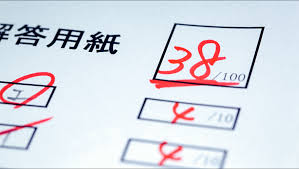Output
After many months (or years, depending on your target language) you're finally ready to output. Where do we begin?
If you've become competent in a particular domain, you've likely acquired enough language to start outputting. A great way to test this is to just try.
One great exercise is to write a review or summary of a piece of immersion content. This is great because the vocabulary is fresh in your mind and you're sticking to a domain you're familiar with. It's okay if you find yourself tongue-tied or forgetting words you "should" know. This is normal. Avoid the urge to look up these words or confirm your grammar usage. You should aim to output from the instincts you've developed over time.
Corrections

Mistakes are bound to happen, but by now the quality of your language will have outpaced a traditional learner by miles.
Still, you want to be improving, and the best way to do this is to self correct. When you say something incorrectly in your native language, you get a gut feeling that something is wrong. If you've gotten enough input you should have some rudimentary form of this in your target language. If your gut is telling you something is off, you should trust it. You can feel free to google the word or sentence you're trying to write. Often times you can search a phrase on a social media site like twitter and see exactly how natives are using it.
If you want to express an idea and aren't sure how to do it, this will prime your subconscious to look for it in your immersion. At this point, your input and output establish a feedback loop.
Corrections from Natives
Corrections from native speakers tend to be overrated. Depending on the culture, it may be considered rude to correct someone's otherwise perfectly understandable speech. If you were talking to a foreigner who could make themselves understood, with minor mistakes, how likely would you really be to correct their every error?
That said, corrections from native speakers can be invaluable when it comes to your blind spots. You may not even be aware that something is wrong, and this is where a native can help.
This works best with a native you have a close relationship with. You can tell your friend that you want to practice conversation, and they really should correct your mistakes. Another reason we prioritize these types of corrections less is that not everyone has a close personal relationship with a native speaker of their target language.
Order of Operations
There really is no way to go wrong with output as long as it's a supplemental activity to your input. As long as you get more input than you produce output you will be able to curb most bad habits. That said, here is a suggestion for a potential output practice routine:
Input
Continue with input as normal. By now you're an expert at this, and you know how to sentence mine.
Writing
Write a paragraph about whatever it is you just watched. Summarize the episode, give it a review. If you need help with formatting or starting your writing, feel free to use movie reviews as immersion content. Reading translates more directly to writing ability. The same is true for listening and speaking.
Conversation
Have an hour long phone call with your native friend. Ask them to gently correct your errors to whatever degree you feel comfortable with. If you pay attention to their corrections, you may notice a category of errors you are making. This will help you spot the "right way" in your immersion.